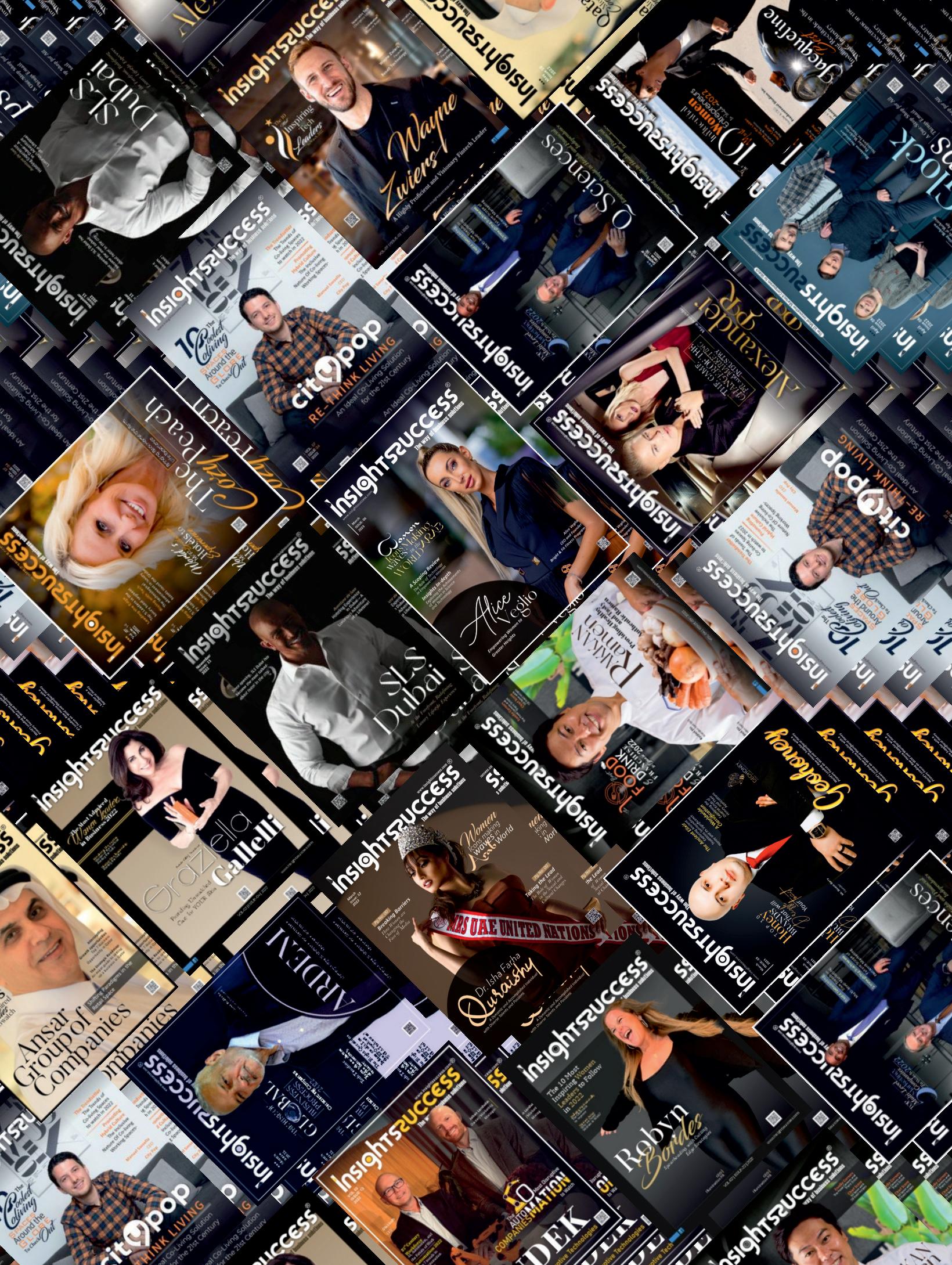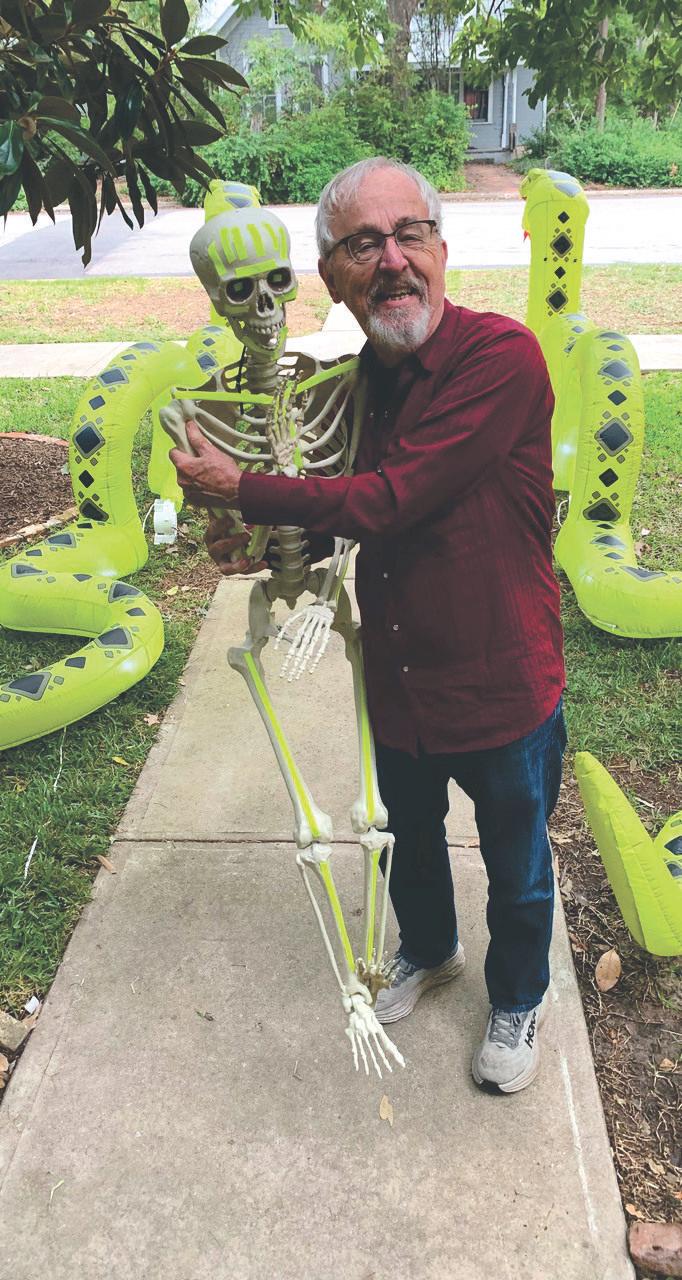








-AlayaBrown
At the intersection of mathematics, human behavior, and urban
planningstandsavisionarywhoseworkcontinuestoshapethe way we experience cities, services, and systems—Professor Richard Larson. Known globally as “Dr Queue,” his groundbreaking contributionstoqueueingtheoryandurbansystemsdesignhavenotonly advancedacademicfrontiersbuthavealsodeeplyinfluencedreal-world applications across healthcare, transportation, emergency response, education,andbeyond.
This feature is a tribute to Professor Larson’s pioneering leadership—a careerdefinednotjustbyinnovation,butbyanenduringcommitmentto solving problems that matter. In a world increasingly defined by congestion, delay, and complexity, his work presents a blueprint for efficiency,dignity,andsmarterdesign.
WhatmakesLarson’scontributionsexceptionalistheseamlessblendof analyticalrigorwithsocialempathy.Hedoesn’tjustmodelsystems—he improves lives. From optimizing waiting lines to designing equitable access to urban infrastructure, his vision challenges conventional thinking and replaces it with clarity, structure, and human-focused outcomes.Hisimpactisasmuchaboutsystemsasitisaboutthepeople navigatingthem.
As an MIT Institute Professor and founder of the MIT Learning International Networks Consortium (LINC), Larson has mentored generationsofproblem-solvers,provingthatleadershipisasmuchabout empowering others as it is about leading innovation. His influence extends across continents, bridging disciplines and inspiring both scholarsandpractitionerstothinkbeyondformulas—tothinkhuman.
InhonoringProfessorLarsonasthe Most Pioneering Leader Rewriting the Blueprint for Queueing & Urban Design, we recognize a mind that notonlyunderstandscomplexitybutharnessesittobuildbetterfutures. His legacy is not merely academic it’s living, functional, and profoundlyimpactful.
This edition is more than a feature; it is a celebration of how one individual’s pursuit of better systems can leave an enduring imprint on cities,institutions,andlives.

Model-Based Thinking: Richard Larson’s Lifelong Mission to Improve Everyday Life Through Analytics


18
Every Voice Matters Student-Centric Education Reimagined
22
Smart Tech, Smarter Learning The Tools That Transform



Editor-in-Chief
Managing
Art
Business
Business
Digital
Co-designer
Marketing

Technical




















Education is undergoing a profound shift—a quiet revolution powered not by technology or policy alone, but by a radical reconsideration of whose voices matter. The student-centric movement is not simply about listening to learners; it's about redesigning systems around them From curriculum to classroom dynamics, assessment to accountability, a student-centered approach reshapes education into a dialogue rather than a monologue. And at the heart of this change is one powerful idea: every voicematters.
FromPassiveRecipientstoActiveParticipants
For generations, students have been treated as passive recipients of knowledge vessels to be filled with predetermined content The teacher taught, the student listened. The system dictated, the learner complied. But the world outside of school no longer works that way. In an era that demands critical thinking, creativity, empathy, and adaptability, students must become co-creators of their learningjourney
Student-centriceducationshiftsthefocusfromwhatisbeing taughttohowandwhyit'sbeinglearned.It’saboutengaging students as partners encouraging inquiry, fostering ownership, and giving them agency to shape not just what they learn, but how they learn best. When learners are empowered to express themselves, their engagement deepens,andtheiroutcomesimprove.
Reimagining education starts with a fundamental shift in leadership.Schoolleaders,policymakers,andeducatorsmust evolvefromdirectorstofacilitators,fromtop-downdecisionmakers to collaborative listeners This doesn’t mean surrendering expertise or authority—it means wielding both inserviceofthelearner
Listening becomes a strategic competency. Schools that center student voice often witness stronger cultures of belonging and trust Whether through student councils, surveys, focus groups, or simply open dialogue, effective schools create structures where feedback loops between
www.insightssuccessmagazine.com

students and educators are not only welcomed but expected. When students see their insights reflected in curriculum adjustmentsorpolicychanges,itreinforcesthemessage:your voicehasvalue.
Atrulystudent-centriccurriculumisdynamicandresponsive. While standards remain essential for coherence and equity, thecontentmustevolvetoreflectstudents’realities,identities, and aspirations. This means making room for culturally responsive teaching, real-world problem-solving, and interdisciplinary learning that connects theory with lived experience.
Moreover,personalizationisnotabouttechnologyalone;it's about humanity. Digital platforms can assist in tailoring pathways, but true personalization arises from knowing the learner their context, challenges, and strengths Great teachersasknotjust,“WhatmustIteach?”but“Whoissitting infrontofme—andwhatdotheyneednow?”
Inastudent-centricmodel,assessmentshiftsfromjudgment to growth. Rather than positioning tests as finish lines, forward-thinking educators use assessments as tools for reflection, revision, and self-awareness. Formative feedback replaces one-off grading; portfolios, peer evaluations, and self-assessmentsgaincredibility.
Students must be taught how to evaluate themselves, set goals, and reflect on their learning This metacognitive practice empowers them to become lifelong learners. In essence,thequestionevolvesfrom“Didyoupass?”to“What didyoulearn,andhowcanyouimprove?”
At its heart, student-centric education is a call for equity. It recognizes that students do not come to school with equal opportunities or experiences—and that treating them all the sameisnotfairness.

Reimagined education demands differentiated instruction, trauma-informedpractice,inclusivepedagogy,andculturally awarecurriculumdesign.
When every voice matters, it means amplifying especially those voices that have historically been silenced—students from marginalized communities, those with disabilities, or learners for whom the dominant language and culture of schooldonotreflecttheirown.Student-centricityisnotabout cateringtotheloudestvoice,butensuringthateveryvoiceis heard.
Technology has a vital role to play in student-centered learning—butitisameans,nottheend.Digitalplatformscan enable personalized learning, facilitate real-time feedback, and offer alternative modes of expression Yet, without intentional human-centered design, technology can just as easily entrench inequality or reduce learning to screens and scores.
Themosteffectivestudent-centrictechnologiesarethosethat adaptto learners—notforcelearnersto adaptto them.Tools thatenablevoice—throughstorytelling,project-basedwork, ormultimediaexpression—arefarmoreimpactfulthanthose that simply deliver content. In the digital classroom, the humanconnectionstillmattersmost.
Educators in a student-centric system become mentors, guides, and co-learners. Their role expands beyond content delivery to include emotional support, cultural navigation, andgrowthfacilitation.Thisredefinitionrequiresnewskills: emotional intelligence, design thinking, coaching, and collaborativeproblem-solving.
Professional development must mirror this shift. Just as we expectstudentstoreflect,collaborate,andgrow,sotoomust teachers be given time and space to evolve—through peer learning, action research, and shared inquiry In a studentcentricculture,educatorsarelearners,too.
Student-centric education is not a program to be implemented—it is a mindset to be nurtured. It challenges long-standing assumptions and disrupts traditional power
dynamics. But the rewards are profound: deeper learning, strongerengagement,andmoreequitableoutcomes.
When students see themselves reflected in their learning—and see their voices shaping the world around them they become not just better learners, but better citizens. They graduate not only with knowledge but with confidence,purpose,andagency
Totrulyreimagineeducation,wemuststopdesigningsystems for students and start designing them with students. This meansembracingdiscomfort,cedingcontrol,andtrustingthe intelligence and insight of young people. It means building schools not as factories of instruction, but as ecosystems of possibility
Every voice matters. And when we create learning environmentsthatreflectthattruth,wedomorethanprepare studentsforthefuture—weinvitethemtocreateit.









In an age where intelligence is no longer confined to humanminds,butembeddedinmachines,applications, and networks, education must evolve to reflect this paradigm shift. The classroom of today is no longer a fixed placefilledwithchalkboardsandtextbooks—it’sadynamic, digital ecosystem where smart technology is empowering bothlearnersandeducatorsinunprecedentedways.
FromAI-poweredplatformsthatpersonalizelearningpathsto immersive tools that bring subjects to life, technology is not simply supporting education it is fundamentally transforming it. And the real magic lies not just in the innovation itself, but in how it enhances understanding, accessibility,andengagementforeverylearner
FromPassiveConsumptiontoActiveEngagement
Traditionaleducationmodelshavelongfollowedaone-sizefits-allapproach.Butstudentsdon’talllearninthesameway or at the same pace.Thisis where smart technology steps in with tools like adaptive learning platforms, which adjust content based on a student’s performance in real time Whetherit’slanguageappslikeDuolingoormathplatforms like DreamBox, smart tech makes learning more interactive and tailored, shifting students from passive recipients to activeparticipantsintheireducationaljourney.

These technologies don’t just track progress—they analyze learning behaviors, identify knowledge gaps, and provide immediate feedback. The result is a more engaged student who feels seen and supported, and a teacher who is empowered with insights to guide instruction more effectively.
Virtual Reality (VR) and Augmented Reality (AR) are no longerfuturisticconcepts.They’rereshapinghowwelearnby transforming abstract ideas into tangible experiences Imagine a history student virtually walking through ancient Rome, or a biology class exploring the human circulatory system in 3D. These technologies enable deeper comprehension by appealing to visual and experiential learners,turningtheoryintolivedexperience.
Intechnicalandvocationaltraining,simulationspoweredby AR/VR allow learners to practice complex procedures in a safe, controlled environment. From medicine to mechanics, immersive tech is revolutionizing how we prepare for realworldchallenges.
Artificial Intelligence is increasingly the backbone of educational technology Intelligent tutoring systems like CarnegieLearningorcontent-recommendationenginesused by platforms like KhanAcademy useAI to deliver targeted support based on student performance. Natural language processing tools can evaluate essays, provide grammar suggestions, and even detect plagiarism, helping educators savetimeandfocusonhigher-orderfeedback.
AIalsoenablesvoiceassistantsandchatbotsthathelpanswer student questions 24/7, democratizing access to academic support. And through predictive analytics, AI can identify students who are at risk of falling behind and intervene early—making education not just smarter, but also more compassionateandinclusive.
Smart tech also extends its transformative touch to the operational side of education Learning Management Systems(LMS)likeCanvasorGoogleClassroomcollectvast amountsofdata,helpingeducatorsanalyzetrendsinstudent engagement and performance. This enables more informed curriculum planning, early interventions, and personalized supportstrategies.
Administrators can use real-time dashboards to monitor school performance, identify resource gaps, and implement data-drivenstrategies.It’sashiftfromanecdotaldecisionsto evidence-based action—streamlining not only teaching but theentireeducationecosystem.
Oneofthegreatestpromisesofsmarttechnologyisitsability tobridgelearninggapsandpromoteequity.Forstudentswith disabilities, assistive technologies like screen readers, speech-to-textsoftware,andeye-trackingdevicesopendoors that were previously closed. Language translation tools can break down barriers for non-native speakers, ensuring that educationalcontentisinclusiveandgloballyaccessible.
Remotelearning,onceabackupplan,isnowapowerfultool in its own right. With the right devices and connectivity, studentsinruralorunderservedregionscanaccessthesame qualityof educationas their urban counterparts. In this way, smarttechdoesn'tjustenhancelearning—itdemocratizesit.
What lies ahead is an educational landscape that’s continuously evolving—learning systems that learn from students. Imagine classrooms powered byAI that adapts not just to a student’s knowledge gaps, but to their emotional state.Orplatformsthatrecommendentirecareerpathsbased onaptitude,interests,andreal-worldjobtrends.
We’reenteringanerawheresmarttechnologywon’tjustbea partofeducation—itwillbetheinfrastructureofit.Butamid allthisinnovation,wemustrememberthatthegoalisnotjust toteachstudentshowtousetechnology,buttoempowerthem touseitwisely,creatively,andhumanely
Smart tech is not about replacing traditional education—it’s about enhancing it. It’s about giving every learner a voice, everyteacherapowerfultoolkit,andeveryschooltheability todomorewithless.Thetoolsthattransformarealreadyhere, but the real transformation comes when we use them with purpose.
When deployed with vision and integrity, smart technology doesn’t just make learning more efficient—it makes it more human.






www.x.com/insightssuccess

